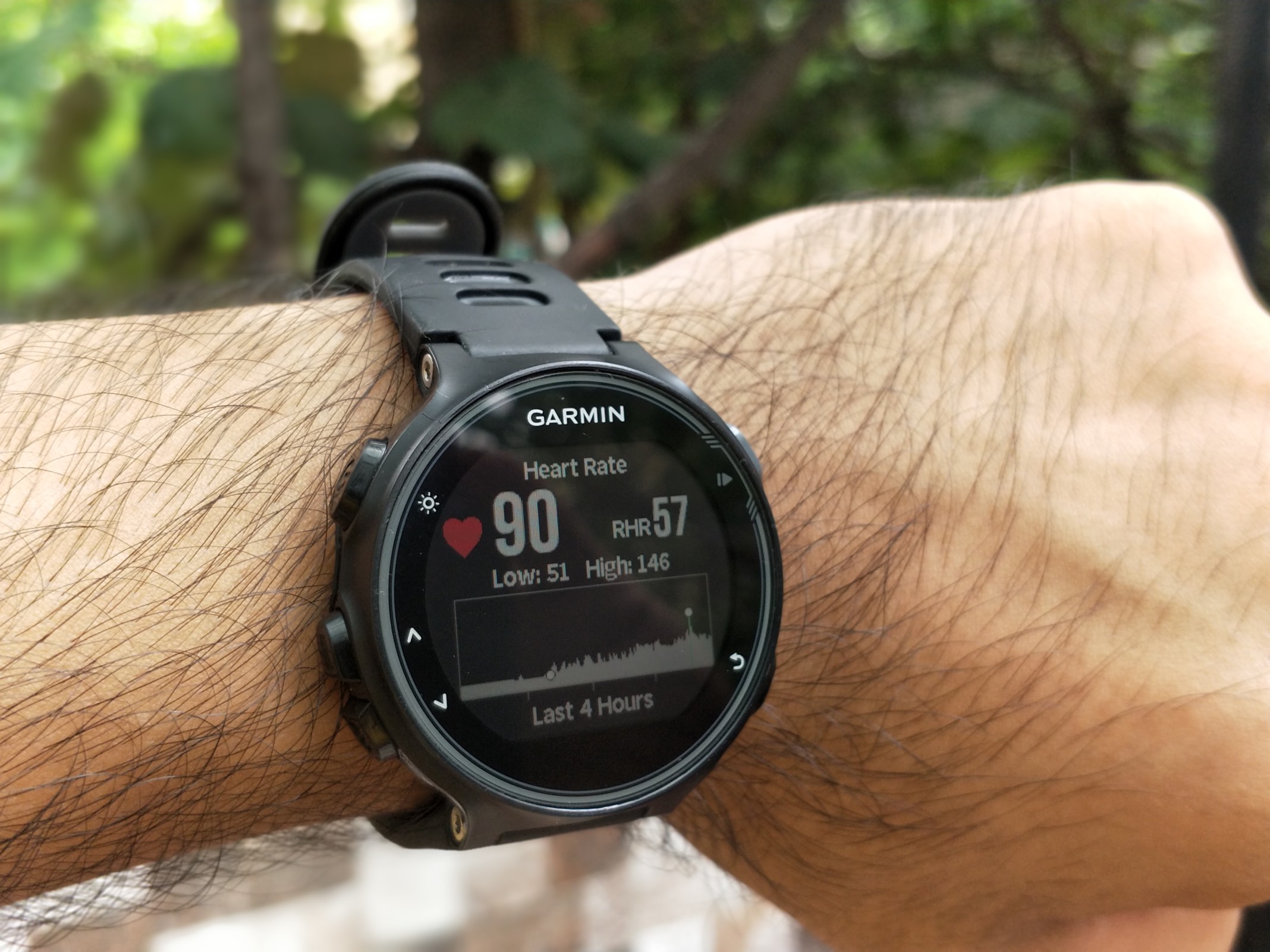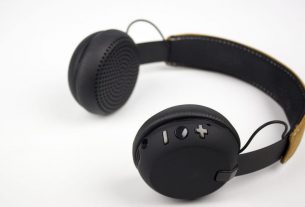When it comes to the core events of running, cycling and swimming the Garmin Forerunner 735XT has everything covered. Track indoor training using the motion sensors or head outside using the GPS – an ideal option when it comes to pool and open water swimming. But it’s the deep data metrics that make this special.
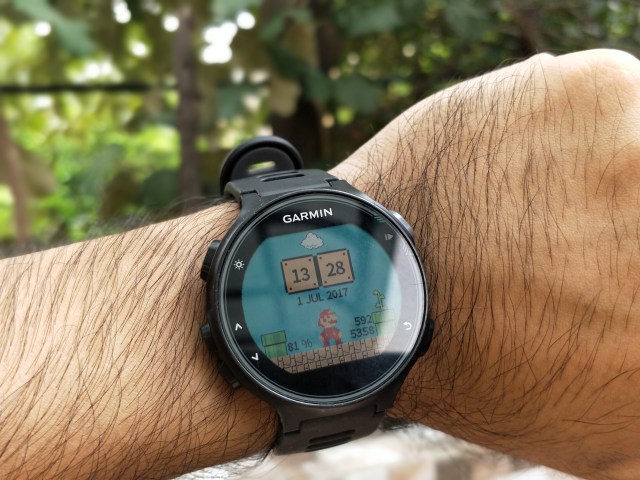
The built-in heart rate monitor can be used for training in zones, or for at-a-glance feedback, but a chest strap still offers more accuracy and even more metrics. When activity trackers started using optical heart rate the serious GPS companies like Garmin and Polar held off, saying chest straps were superior. Then a certain fruit named gadget manufacturer plonked optical heart rate on its first wearable and Garmin folded to the will of the people.
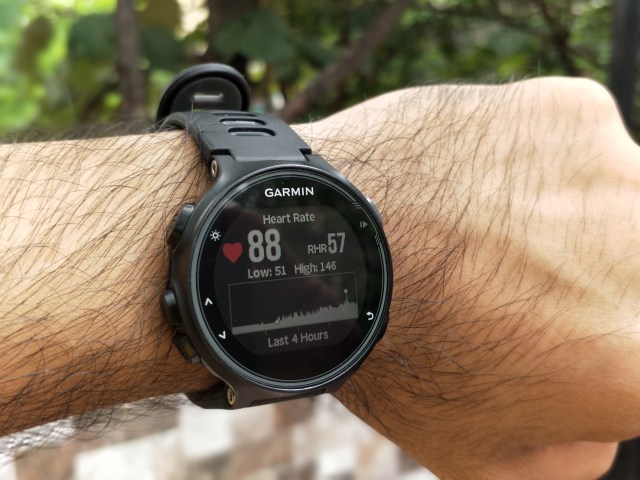
So while the optical heart-rate monitor is there to please everyone, Garmin still offers chest straps for the more serious athlete that wants supreme accuracy and the resultant data.
With the chest strap in place you can benefit from running dynamics that measure – deep breath – vertical oscillation, ground contact time, cadence, stride length, vertical ratio, ground contact time balance and even an estimated lactate threshold figure, recovery time and VO2 max. If all that lot isn’t clear enough, for the less hardcore you can turn on virtual partner and set that to a pace you need to follow – ideal for specific race finish goals.
All that said, when we ran with a chest strap connected to the MapMyFitness app on our phone and the Garmin using optical heart rate the difference was minimal.
Swim tracking is pretty much spot on for length count thanks to the auto stroke detection system. On a 1,000m swim we found it to be one length out in a 50m pool – although that might have just been our pesky fleshy brains miscounting when tired. However if you’re planning on stopping and starting you will need to press pause, as this doesn’t do it automatically like the Suunto Ambit3 Vertical, for example. Despite the built-in heart rate monitor, you’ll need the tri-chest strap to track heart rate as all that water sloshing disables the wrist HR tracking.

When cycling the data is accurate thanks to Garmin GPS smarts, but we’d say that the optical heart-rate monitor can get glitchy here. If you’re riding a racer the drop-handlebars can flex your wrist muscles in a way that works the watch off your wrist and down to your hand, we found. Tightening the strap helps sort this but it’s verging on uncomfortable.
Garmin Forerunner 735XT: Garmin Connect app
The Garmin Connect app is the Marmite of the sports tracker world. Love it or hate it. There are plenty of options to deep dive data but you get a clear at-a-glance top level view that works for beginners too.
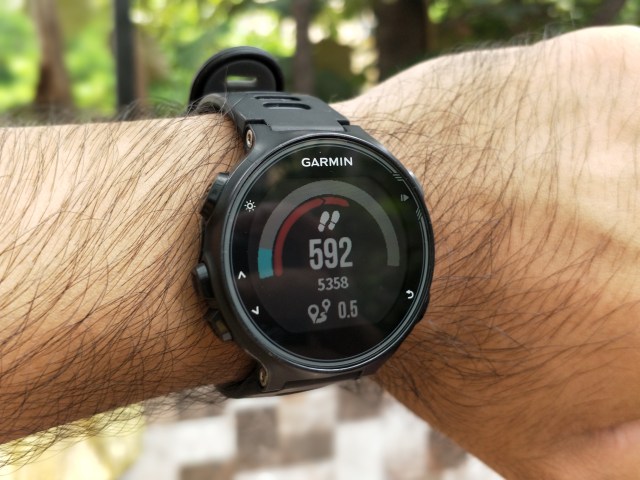
However, we suffered some Bluetooth issues with the Connect app (and other Garmin watches) with an Android device. There’s no button to sync the watch and phone as it works automatically. While this is done to make it easier, when problems arise you’re left without much control to fix them. We even lost a bunch of runs as we had to reset the watch to get it to connect with the app as if for the first time again.
Connectivity issues aside, the app does show off routes clearly with maps and paths plotted out. While data is laid out obviously in graphs, there isn’t a great deal to do with that data – it’s left to you to decide what it all means. With activity tracker manufacturers like Jawbone investing a lot in apps that translate data into actions, Garmin could do with expanding the app here. It does have a section called Insights but this is largely limited to step focused tips like “walk faster”.
Thanks to Garmin’s GPS heritage and adventure gadgets there are some nice options for routing. You can save a course to repeat in future or create routes with waypoints that can be followed as you run. This is ideal if you have a specific distance or route with the right hill climbs you want to train on regularly to track progress more clearly.
Then there are the Connect IQ apps that sit on Garmin’s own app platform. These range from cool watch faces and Strava live cycling to find-my-car and gym timer apps – there are plenty to pick from. While the platform is limited, it adds a lot to the value of the watch and makes the time between buying and getting bored far longer. This should ultimately keep you using the watch, which is always going to be a good thing for training.
Garmin Forerunner 735XT: Smartwatch notifications
Garmin has got smart notifications right. It just works. Sure, you can’t respond but that’s not the point. This is primarily a watch for serious training where you ignore most notifications, only using them to keep you aware of anything serious enough to interrupt your attempts at a new personal best.
The watch is able to deliver call alerts, with caller name, text messages, WhatsApp notifications and even emails. You can read most of those right on the watch, excluding emails. Calendar notifications can also be of use when out and about.
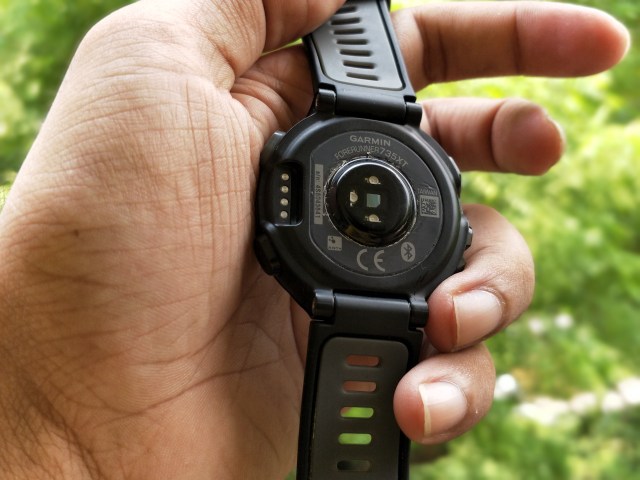
Since the watch also acts as a daily activity tracker, you can have movement alerts vibrate to stop you staying too stagnant. This is accompanied by Garmin’s red Move bar that grows if you remain still for too long.
Garmin Forerunner 735XT: Battery life
Thanks to the extras on the Garmin Forerunner 735XT and the drop in size from its predecessor, the 920XT, this model tops out at about 24 hours of UltraTrac GPS or 14 hours of pure GPS tracking. Compared the the 50 odd hours of the Fenix 3, suddenly that extra heft doesn’t seem so bad. That said most people, even first timers, will finish a triathlon in 14 hours since that’s around the cut off point.
It seems Garmin has made this watch with that very specific time in mind. You get a good week of use for daily step tracking, smartphone alerts and heart rate on the wrist. So there’s very little to worry about on the charging front.
